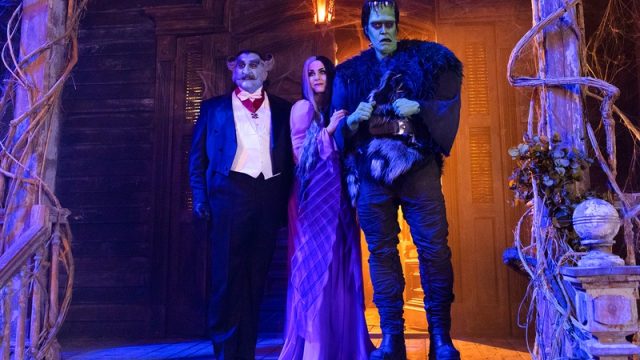This Week You Will Never Hear the End of:
- the Snyder Cut
- Rob Zombie
- jazz sexism
- visual effect technology
- death itself!
Endless thanks to scb0212, Guillermo Jiménez, and Miller for providing articles this week. Send articles throughout the next week to ploughmanplods [at] gmail, post articles from the past week below for discussion, and Have a Happy Friday!
Slate’s Dan Kois runs down the best fictional deaths of all time, in a breathlessly broad list that ranges from Madea’s children to Howard Ratner:
not get caught,” Thelma says as the cops lock and load behind them. “Let’s keep going.” Their road trip across the American West has already transformed these two women from victims to avenging angels (and galvanized America, when Thelma & Louise hit theaters). Now Thelma asks her friend to make the journey endless. Director Ridley Scott fought to keep screenwriter Callie Khouri’s epic final moment: Louise floors it, the women clasp hands, and the blue Thunderbird hurtles off the edge of the goddamn Grand Canyon. It’s a death turned into a perverse triumph, a moment of desperation transformed into exhilaration, as the car freezes in midair, hubcap spinning away into the sky. We never see them fall, so we’re given a gift: We may imagine that their road trip does keep on going, that they’re still out there, raising hell and kicking ass, forever and ever, amen.
Rolling Stone’s Tatiana Siegal dives into the machinations behind a WarnerMedia report that bots and other inauthentic users bolstered the fan-led campaign for director Zack Snyder’s Justice League do-over:
Rolling Stone spoke with more than 20 people involved with both the original Justice League and Snyder’s cut, most of whom believe that the director was working to manipulate the ongoing campaign. Snyder claims that, “if anyone” was pulling strings on the social media fervor, it was Warner Bros. “trying to leverage my fan base to bolster subscribers to their new streaming service.” But one source maintains, “Zack was like a Lex Luthor wreaking havoc.”
At Vulture, Lane Brown looks at better TVs (and cheaper studios) making for worse visual effects:
Hollywood has been slower to adapt. Even as much live-action footage is shot at 4K or higher, plenty of movie CGI is still rendered at 2K — which, somewhat confusingly, can be not just half as sharp as 4K but a quarter. Since a 2K effect in a 4K shot sticks out like a blurry thumb, most movies with lots of digital imagery resort to a work-around. All of the live-action footage is downgraded to 2K to match the digital elements and then the combined product is upscaled (enlarged and enhanced using AI) to 4K for home video. Meanwhile, most older films can simply be remastered at a single higher standard. This is why a $350 million movie like 2019’s Avengers: Endgame may get less of a boost from your new TV than older CGI-less ones like 1960’s Spartacus or even 1990’s Home Alone.
Scott Wampler makes the case for Rob Zombie’s vision at Fangoria:
From his albums to the music videos they inspired to the films he’s made over the years, it’s very clear that Zombie just wants to do stuff he considers badass, and we – the people gawking at whatever he’s done this time – are invited to piss off if we think it’s childish or retrograde or clunkily-written or whatever. Rob Zombie is following his muse, and sometimes that muse tells him to do things like write a song that’s really just Zombie dragging everything he doesn’t like for three verses (including, somewhat inexplicably, The Flying Nun) while celebrating the healing power of shaking your ass and getting blazed out of your gourd. How do ya not love this guy?
And Marcus J. Moore takes a recent documentary on free jazz to task for not including female artists:
Ultimately, Fire Music dilutes the voices of Black women in a subgenre still fighting for greater recognition. While oversights can happen when creating a film of this magnitude, it feels like the director didn’t even try to include these women, even as he shed proper light on musicians who never got the respect they deserved. But in his pursuit to correct Ken Burns’ jazz documentary (which barely mentions free jazz at all), he presents a myopic view of free jazz, eschewing important voices. While Fire Music should be applauded for bringing the likes of Sun Ra and Cecil Taylor to the big screen, the lack of deference to Black women overshadows the project’s intent. They deserve our highest regard, not the silent treatment.

